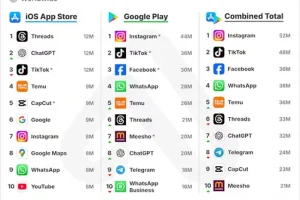Employees want opportunities to learn skills and grow. They want help mapping out their careers. And they want to stay relevant.
In other words, they want career development.
But in a time of tight budgets and the mantra “do more with less,” talent teams may feel hard pressed to provide as much learning and development as they’d like.
Still, there are ways to provide plenty of learning opportunities even if you don’t have a huge budget. Let’s look at what career development is, why it’s important, and 10 affordable ways you can help employees grow and learn.
What is career development?
Career development is the support an organization provides to an employee to help them grow and move within the organization. It includes coaching, mentoring, skills development, networking, and career pathing. Generally facilitated by the human resources or learning and development team, career development is considered a critical aspect of talent management.
Why career development is important
Learning new skills and staying relevant has become more important than ever. Linkedin research shows that the skills people need for their jobs have changed by 25% since 2015, a number that is expected to grow to at least 65% by 2030.
Because skills are changing rapidly, employees are hungry for growth. Job seekers consider career development so important that nine out of 10 want to see a skills development program, clear career paths, and career advancement opportunities when considering a new job.
Career development also plays a big role in retention. LinkedIn’s Workplace Learning Report found that 90% of organizations are concerned about employee retention — and providing learning opportunities is the No. 1 way to get employees to stay.
The No. 1 challenge with career development right now
Of course, it’s all well and good to tout the benefits of career development, but many learning and development teams are now being asked to do more with less. They often don’t have the resources to offer all the learning opportunities they’d like.
But there are ways to help employees learn and grow, even if you’re working on a tight budget.
How to make time for career development
While employees often strive to set aside time for career development, their days can be chewed up by email, Teams messages, and we-need-it-by-yesterday deadlines. That time crunch is real. Research shows that during the average 40-hour workweek, employees have only 24 minutes to learn.
But there are ways that you can help employees carve out time to develop their careers:
- Schedule learning time into the calendar. This may seem obvious, but blocking time on employees’ calendars is an effective way to ensure they have time to learn, especially if the whole company makes the same commitment. It could be one hour a month, or one hour a quarter, but putting it on the calendar makes it official.
- Make learning relevant by tying it to career goals. According to the most recent Workplace Learning Report, 4 out of 5 employees want to learn more about how to use AI in their profession. It’s so relevant that they want to learn. And when learning is directly related to a career goal — and employees understand the answer to “What’s in it for me?” — they’re more likely to make time.
- Get managers on board. If a manager considers learning to be as important as an employee’s other work, employees are more likely to see the value and make time. Managers can hold regular development conversations with employees and suggest training to help further their career goals.
Here are 10 low-cost ways to provide career development
1. Start a mentorship program
With mentorship programs, you can leverage in-house talent to help employees learn. Mentors are more experienced employees who share their knowledge, advice, skills, and networks with other employees. In the process, mentors gain leadership skills and the satisfaction of helping someone move ahead in their career.
But it can go both ways. Reverse mentorships also provide wonderful learning opportunities, with less experienced workers — for example, Gen Z employees — mentoring those higher up the org chart. “Putting the older and younger generations together gives them all the opportunity to learn from each other,” says Matthew Starr, a leadership development coach in the Denver area. “You meld the tech expertise of the young and the institutional knowledge of elders.”
How do you start a mentorship program? First, match mentors and mentees using software programs such as Chronus or Qooper. Then, be sure to provide some training, so employees know how often they should meet and how they should structure their meetings.
2. Offer online courses
One of the most convenient and affordable ways for employees to upskill is through online courses. Many platforms offer free or low-cost courses on everything from project management to leadership to data analysis.
Based on the size of your budget, you may want to get creative about how you access these platforms. LinkedIn Learning, for example, offers unlocked courses, some permanently and some temporarily. LinkedIn members can also subscribe to LinkedIn Premium free for one month, which includes access to LinkedIn Learning. Finally, LinkedIn Learning for Teams allows individual teams to take courses, at considerably less cost than an enterprise-wide subscription.
3. Tap into YouTube, TikTok and TED Talks
The internet offers a wealth of information and much of it’s free. You can search social media sites for videos that teach skills. YouTube, for example, offers short, to-the-point tutorials on . . . well, pretty much everything. If you want employees to learn how to write prompts for generative AI, you might share this video by Jeff Su. Or you could tap into TikTok and offer this 45-second video from Rider Harris.
TED Talks, which can be hugely inspiring and informative, are also great to share. If you’re teaching leadership skills, for example, you might share this TED Talk on the power of humor in leadership by Jennifer Aaker and Naomi Bagdonas (and get a laugh in the process too).
4. Provide opportunities for cross-departmental projects
One of the best ways for employees to learn, for little or no cost, is to let them work in other departments on a stretch project or temporary assignment. A marketing employee could help out 10 hours a week on a sales project. Or someone in finance might cover a maternity leave in data analytics.
Bryce Welker, CEO of Crush Empire, likes to do this with his employees, giving them opportunities to work on different projects outside their usual scope. “This not only allows them to gain skills but also offer fresh perspectives,” Bryce says. “It’s also a great way for them to explore various aspects of our business and develop a more well-rounded professional profile.”
5. Host a lunch and learn session with an internal expert
Some of your best trainers may be employees you already have in-house — subject matter experts who could share valuable knowledge with others. Ask one of them to speak at a lunch and learn, either in-person or online.
To find the best speakers, do a little sleuthing about the expertise of your employees. Is there an employee who could teach storytelling skills to sales or marketing? Is there another who’s an expert in Python and could explain clearly how to use it?
Ask around about employees’ interests and hobbies too. If an employee moonlights as a meditation teacher, ask them to give a short talk — while people are eating — and then lead a mediation session.
6. Start a book club
Book clubs are a fun way for employees to explore the latest industry ideas or trends, learn more about critical skills, and get to know their coworkers.
Organize a club that meets regularly (once a month, for example) and either select a book you’d like everyone to read or allow employees to choose one. Pick topics that are interesting and speak to employees’ work now. If employees need help with communication skills, you might suggest Crucial Conversations: Tools for Talking When the Stakes are High. If their interests lean towards productivity and how to avoid burnout, Cal Newport’s Slow Productivity: The Lost Art of Accomplishment Without Burnout will generate a lively discussion.
You might consider having a skilled facilitator run the groups, especially if you’re hosting a book club online. This will help the more reticent participants speak up and join the conversation.
7. Make job shadowing a regular practice
When employees onboard with a company, they often shadow another worker to learn how to do their job. But you don’t need to stop with onboarding; shadowing is one of the easiest low-cost ways for employees to learn new skills.
Shadowing gives employees a chance to learn what other employees do and how they do it. Start by identifying a skill that an employee needs or wants to learn. Then identify the employees or teams who could teach this. After making a match, arrange a time that will work for both employees — it could be a single day or several days a month — and follow up afterward to ask how the process went.
You might also consider following the example of Gitlab’s CEO Shadow Program, in which team members can sit in on all of the CEO’s meetings and see what it’s like to run the company at the highest levels.
8. Share podcasts with employees
Podcasts are another free way to share knowledge with employees. They cover just about every workforce topic imaginable and they’re often shorter than online courses. When you find one you like (and have actually listened to), share it with employees or post to your company’s learning and development site.
Not sure where to start? Here are a few to consider:
- HBR’s IdeaCast. This is a weekly podcast that features the leading thinkers in business and management.
- WorkLife with Adam Grant. Hosted by organizational psychologist and bestselling author Adam Grant, this podcast offers insights into how to create a thriving workplace.
- Dare to Lead. Hosted by Brené Brown, this podcast features conversations with “change catalysts, culture-shifters, and more than a few troublemakers who are innovating, creating, and daring to lead.”
9. Take advantage of industry offerings
Many organizations offer free webinars or resources to help employees learn. To start: You might want to check out the webinars from The Harvard Business Review or those offered by the MIT Sloan Management Review. Another great resource is the recorded sessions from the Aspen Institute’s annual Aspen Ideas Festival.
And don’t forget that many companies, such as Microsoft, offer free training videos on how to use their products. The same goes for Google. Every year, LinkedIn also offers free access to its Talent Connect Show, a two-day broadcast that features a mix of content that includes original programming and highlights from its global conference for talent professionals.
10. Invite an expert from your network or community
If you’re a learning and development professional, you probably know a lot of people outside the company with a wide range of expertise. Why not ask one of them to speak to your employees?
If you want to offer a session on improving soft skills, for example, tap into the organizational psychologist in your network and ask if they’d give a 30-minute talk. Or if you need to coach employees on writing better emails, reach out to a professor from a local community college who specializes in business communications. The worst that can happen is they say “no.”
In turn, your external expert may ask someone from your company to present to their colleagues or students — which can only be good for your company’s standing in the community.
Final thoughts: It’s worth the investment
While getting creative on a budget is great, it’s important to remember that investing in career development pays a dividend. Yes, you have to put time and energy into it. But when your company is ready, it makes sense to invest with a budget too. Why? Because learning boosts the bottom line.
Almost four in five L&D professionals agree that it’s less expensive to reskill a current employee than it is to hire a new one. And companies that facilitate career development are 2.6x more likely to exceed their financial targets.
But most of all, a robust learning program shows employees that you value them enough to invest in their development. And that, in itself, is worth a lot.










